Orange County Museum of Art
August 6 - December 4, 2016
On August 6th the Orange County Museum of Art opens American Mosaic: Picturing Modern Art through the Eye of Duncan Phillips. A collection of American art from the late 1800s through the mid 1900s, the exhibition reveals the nature of art during the formation and heyday of modern art in the United States and reflects a culture of independence, diversity, and experimentation. Included are important works by Richard Diebenkorn, Arthur Dove, Thomas Eakins, Helen Frankenthaler, Marsden Hartley, Winslow Homer, Edward Hopper, Georgia O’Keeffe, Horace Pippin, and Clyfford Still. (A complete list is below.)
The Phillips Collection, America’s first museum dedicated to modern art, was opened in 1921 in the nation’s capital by Duncan Phillips (1886–1966), who was determined to lift the work of American artists out of obscurity at a time when museums and collectors were primarily interested in European old masters. With an emphasis on the work of living artists, he assembled a collection of American painting when there were no roadmaps for what would stand the test of time. Phillips’s collecting interests were broad-ranging. He promoted diversity— as seen in the works by self-taught artists, artists of color, foreign-born artists, and recently naturalized Americans—resulting in a rich assembly of independent-minded artists.
He also believed his collection needed to reflect the continuity of art across time. He reached back into the 19th century to collect artists that he considered America’s first modern masters, particularly Thomas Eakins, Winslow Homer, and Albert Pinkham Ryder, in order to demonstrate the connections between past and present in American modernism.
Phillips dedicated his life to finding, fostering, and celebrating the very best of American art, particularly the work of America’s living artists and especially those guided by their independence and individualism, rather than popular trends. He collected his favorite artists in depth, committed to purchasing “many examples of the work of artists he admired, instead of having one example of each of the standardized celebrities.”
He also adopted a practice associated with commercial galleries and unprecedented in the museum setting: Phillips gave living artists solo exhibitions. He believed that these were an important source of encouragement for artists, especially at the beginning of their careers.
American Mosaic: Picturing Modern Art through the Eye of Duncan Phillips, presented in six thematic sections, demonstrates not only the changes in American art from the late nineteenth through the mid-twentieth centuries, it also celebrates Phillips’s lifetime commitment to an extraordinary vision and how this focus created one of the finest collections of American art.
ARTISTS AND ARTWORKS HIGHLIGHTED IN THE EXHIBITION
ROMANTICISM
AND REALISM
By the second half of the 19th century, young American painters were seeking alternatives to the sentimentality of American genre painting and with the work of independent- minded artists such as George Inness, Winslow Homer, Thomas Eakins, and Albert Pinkham Ryder (all represented in this exhibition), American art came of age. Considered America’s ‘modern’ old masters by Duncan Phillips, these artists relied more on an artistic inner vision and an exploration of the emerging interest in psychology.
Romanticism and Realism
1. Albert Pinkham Ryder (1847-1917)
Moonlit Cove, early to mid-1880s
Oil on canvas
14 1/8 x 17 1/8 inches
The Phillips Collection, Washington, D.C.
Acquired 1924
2. Winslow Homer (1836-1910)
To the Rescue, 1886
Oil on canvas
24 x 30 inches
The Phillips Collection, Washington, D.C.
Acquired 1926
3. Thomas Eakins (1844-1916)
Miss Amelia Van Buren, c. 1891
Oil on canvas
45 x 32 inches
The Phillips Collection, Washington, D.C.
Acquired 1927
4. George Inness (1825-1894)
Lake Albano, 1869
Oil on canvas
30 3/8 x 45 3/8 inches
The Phillips Collection, Washington, D.C.
Acquired 1920
5. Arthur B. Davies (1862-1928)
Along the Erie Canal, 1890
Oil on canvas
18 1/8 x 40 1/8 inches
The Phillips Collection, Washington, D.C.
Acquired 1920
6. Louis Michel Eilshemius (1864-1941)
Adirondacks: Bridge for Fishing, 1897
Oil on canvas
18 x 34 7/8 inches
The Phillips Collection, Washington, D.C.
Acquired 1933
In 1886, work by the French impressionists made it to New York and transformed American painters who took to painting outdoors, adopting a brighter palette and applying pure unmixed color on the canvas in dabs and broken brushstrokes to create a sense—an impression—of reflected light, air, and atmosphere. American Mosaic includes artworks by Childe Hassam, Theodore Robinson, John Henry Twachtman, and Julian Alden Weir, who were among the first American painters to assimilate these principals.
Impressionism
7. Theodore Robinson (1852-1896)
Giverny, c. 1889
Oil on canvas
16 x 22 inches
The Phillips Collection, Washington, D.C.
Acquired 1920
8. John Henry Twachtman (1853-1902)
The Emerald Pool, c. 1895
Oil on canvas
25 x 25 inches
The Phillips Collection, Washington, D.C.
Acquired 1921
9. Julian Alden Weir (1852-1919)
The High Pasture, 1899–1902
Oil on canvas
24 1/8 x 33 1/2 inches
The Phillips Collection, Washington, D.C.
Acquired 1920
10. Childe Hassam (1859-1935)
Washington Arch, Spring, c. 1893 (inscribed 1890)
Oil on canvas
26 1/8 x 21 5/8 inches
The Phillips Collection, Washington, D.C.
Acquired 1921
11. Ernest Lawson (1873-1939)
Spring Night, Harlem River, 1913
Oil on canvas, mounted on panel
25 1/8 x 30 1/8 inches
The Phillips Collection, Washington, D.C.
Acquired 1920
12. Theodore Robinson (1852-1896)
Two in a Boat, 1891
Oil on canvas adhered to cardboard
9 3/8 x 13 3/4 inches
The Phillips Collection, Washington, D.C.
Acquired 1920
13. Maurice Prendergast (1858-1924)
Fantasy, c. 1917
Oil on canvas
22 5/8 x 31 5/8 inches
The Phillips Collection, Washington, D.C.
Acquired 1921
At the turn of the 20th century, a new generation of artists including Rockwell Kent, Marsden Hartley, and John Marin—who were dissatisfied with impressionism’s emphasis on domesticated landscape views rendered in soft, atmospheric light—sought to reinterpret nature in a bold, expressive manner. In 1928 Phillips wrote of Kent that his painting captured “The dramatic, the elemental...and the cosmic,” and later referred to Hartley as “powerful and personal and wholly American.”
NATURE AND ABSTRACTION
After World War I when American artists struggled to define the country’s modern identity, Phillips was among the most adventurous collectors and museum directors, embracing bold, original works that signaled a uniquely American style. Through the circle of artists championed by photographer and gallerist Alfred Stieglitz, Phillips met and collected works by Arthur Dove, John Marin, and Georgia O’Keeffe, who believed the experience of the natural world was a spiritual one in which nature’s essence could be made visible in abstract elements—color, form, and line—divorced from representation.
Forces in Nature
14. John Henry Twachtman (1853-1902)
My Summer Studio, c. 1900
Oil on canvas
30 1/8 x 30 1/8 inches
The Phillips Collection, Washington, D.C.
Acquired 1919
15. Paul Dougherty (1877-1947)
Storm Voices, 1912
Oil on canvas
36 x 48 inches
The Phillips Collection, Washington, D.C.
Acquired 1912
16. Rockwell Kent (1882-1971)
The Road Roller, 1909
Oil on canvas
34 1/8 x 44 1/4 inches
The Phillips Collection, Washington, D.C.
Acquired 1918
17. Marsden Hartley (1877-1943)
Mountain Lake—Autumn, c. 1910
Oil on academy board
12 x 12 inches
Collection of The Phillips Collection, Washington, D.C.
Gift of Rockwell Kent, 1926
18. Harold Weston (1894-1972)
Winds, Upper Ausable Lake, 1922
Oil on canvas
16 x 22 inches
The Phillips Collection, Washington, D.C.
Gift of Mrs. Harold Weston, 1981
19. John Marin (1870-1953)
The Sea, Cape Split, Maine, 1939
Oil on canvas
24 1/4 x 29 1/4 inches
The Phillips Collection, Washington, D.C.
Acquired 1940
Nature and Abstraction
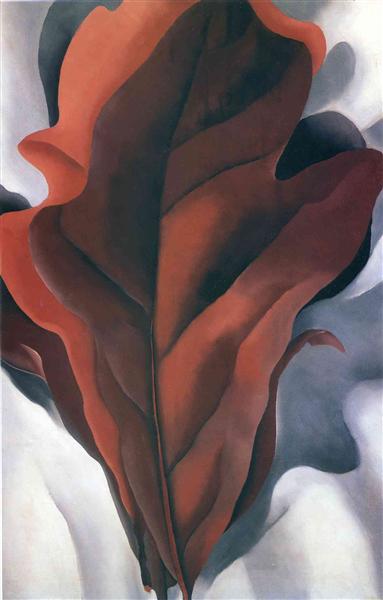
20. Georgia O’Keeffe (1887-1986)
Large Dark Red Leaves on White, 1925
Oil on canvas
32 x 21 inches
The Phillips Collection, Washington, D.C.
Acquired 1943
21. Arthur Dove (1880-1946)
Sun Drawing Water, 1933
Oil on canvas
24 3/8 x 33 5/8 inches
The Phillips Collection, Washington, D.C.
Acquired 1933
22. Augustus V. Tack (1870-1949)
Canyon, c. 1923-24
Oil on canvas on plywood panel
29 x 40 inches
The Phillips Collection, Washington, D.C.
Acquired 1924
23. Georgia O’Keeffe (1887-1986)
Ranchos Church, No. II, NM, 1929
Oil on canvas
24 1/8 x 36 1/8 inches
The Phillips Collection, Washington, D.C.
Acquired 1930
24. Arthur Dove (1880-1946)
Red Sun, 1935
Oil on canvas
20 1/4 x 28 inches
The Phillips Collection, Washington, D.C.
Acquired 1935
MODERN LIFE
Moving away from its roots as an agrarian culture, America at the turn of the 20th century grew fascinated by the emergence of the city and its newly developing energy. The first wave of American painters interested in the grit and grim of the city became known as the Ashcan School while a second wave of artists were more interested in the effects of the city on the American psyche. Phillips found these artists, such as John Sloan and later Edward Hopper, to embody all of the complexity and contradictions of the new urban scene. Drawn to the work of John Sloan, Phillips noted that the artist “points out not only the crowd but the lonely individual caught in the maelstrom;” and similarly, after acquiring Hopper’s Sunday (1926) in 1926, Phillips described how Hopper balanced the abstraction of architectural spaces against the psychological isolation of modern life. The renewed sense of nationalism that settled over the country at the end of World War I coupled with engineering advances found expression in the new ways to express pictorially the structures of the city.
Modern Life
25. John Sloan (1871-1951)
Clown Making Up, 1910
Oil on canvas
32 1/8 x 26 inches
The Phillips Collection, Washington, D.C.
Acquired 1919
26. George Bellows (1882-1925)
Emma at a Window, 1920
Oil on canvas
41 1/4 x 34 3/8 inches
The Phillips Collection, Washington, D.C.
Acquired 1924
27. Walt Kuhn (1877-1949)
Girl with Mirror, 1928
Oil on canvas
24 x 20 inches
The Phillips Collection, Washington, D.C.
Acquired 1929
28. Guy Pène du Bois (1884-1958)
Blue Armchair, 1923
Oil on plywood panel
25 x 20 inches
The Phillips Collection, Washington, D.C.
Acquired 1927
29. Edward Hopper (1882-1967)
Sunday, 1926
Oil on canvas
29 x 34 inches
The Phillips Collection, Washington, D.C.
Acquired 1926
The City
30. John Sloan (1871-1951)
Six O’Clock, Winter, 1912
Oil on canvas
26 1/8 x 32 inches
The Phillips Collection, Washington, D.C.
Acquired 1922
31. Stefan Hirsch (1899-1964)
New York, Lower Manhattan, 1921
Oil on canvas
29 x 34 inches
The Phillips Collection, Washington, D.C.
Acquired 1925
32. Charles Sheeler (1883-1965)
Skyscrapers, 1922
Oil on canvas
20 x 13 inches
The Phillips Collection, Washington, D.C.
Acquired 1926
33. Ralston Crawford (1906-1978)
Boat and Grain Elevators, No. 2, 1942
Oil on hardboard
20 1/8 x 16 inches
The Phillips Collection, Washington, D.C.
Acquired 1943
34. Stefan Hirsch (1899-1964)
Mill Town, c. 1925
Oil on canvas
30 x 40 inches
The Phillips Collection, Washington, D.C.
Acquired 1925
35. Edward Bruce (1879-1943)
Power, c. 1933
Oil on canvas
30 x 45 inches
The Phillips Collection, Washington, D.C.
Gift of Mrs. Edward Bruce, 1957
36. Edward Hopper (1882-1967)
Approaching a City, 1946
Oil on canvas
27 1/8 x 36 inches
The Phillips Collection, Washington, D.C.
Acquired 1947
An early supporter of Charles Sheeler and his interpretations of the city with abstract patterns of light and dark, Phillips believed his pictures expressed the impersonal character of the time with dreamlike precision. Millions of immigrants from Europe, Latin American, and Asia began arriving in the United States in the late 19th century. African Americans from the rural South moved to the cities of the North seeking freedom from oppression between 1910 and 1940.
Phillips—who believed a diversity of voices was an essential part of American life—was particularly attracted to work by artists of color, including Jacob Lawrence and Horace Pippin; and the self-taught Grandma Moses, who painted the rural life in upstate New York that she knew intimately.
Memory and Identity
37. Yasuo Kuniyoshi (1893-1953)
Maine Family, c. 1922-23
Oil on canvas
30 1/4 x 24 1/8 inches
The Phillips Collection, Washington, D.C.
Acquired 1940
38. John Kane (1860-1934)
Across the Strip, 1929
Oil on canvas
32 1/4 x 34 1/4 inches
The Phillips Collection, Washington, D.C.
Acquired 1930
39. Allan Rohan Crite (1910-2007)
Parade on Hammond Street, 1935
Oil on canvas board
18 x 24 inches
The Phillips Collection, Washington, D.C.
Acquired 1942
40. Jacob Lawrence (1917-2000)
Toussaint L'Ouverture series, No. 17: The Capture, 1987
Silkscreen
28 x 18 1/2 inches
The Phillips Collection, Washington, D.C.
Gift of Amistad Research Center, 1987
41. Jacob Lawrence(1917-2000)
Toussaint L'Ouverture series: Contemplation, 1993
Silkscreen on two ply rag paper
32 1/8 x 22 1/8 inches
The Phillips Collection, Washington, D.C.
Gift of Jacob Lawrence, 1993
42. Horace Pippin (1888-1946)
Domino Players, 1943
Oil on composition board
12 3/4 x 22 inches
The Phillips Collection, Washington, D.C.
Acquired 1943
43. Grandma Moses (1860-1961)
Hoosick Falls in Winter, 1944
Oil on hardboard
19 3/4 x 23 3/4 inches
The Phillips Collection, Washington, D.C.
Acquired 1949
44. Doris Lee (1905-1983)
Illinois River Town, c. 1938
Oil on canvas
32 x 50 inches
The Phillips Collection, Washington, D.C.
Acquired 1939
LEGACY
OF CUBISM
Cubism, which developed in France around 1907, burst onto the American scene in 1913. In the 1920s and 1930s, some American modernists tried to Americanize cubism, both in style and subject matter. Russian-born Ilya Bolotowsky, co-founder of the American Abstract Artists advocated for order and balance through pure geometric abstraction. Karl Knaths developed what critic Ralph Flint called a “very American, very masculine” cubist style. Working independently, Knaths developed a highly original style that used expressive line and planar arrangements of color to interpret his environment, which Phillips valued for its ‘humanizing abstraction.’
Legacy of Cubism
46. Karl Knaths (1891-1971)
Maritime, 1931
Oil on canvas
40 x 32 inches
The Phillips Collection, Washington, D.C.
Acquired 1931
47. John D. Graham (1887-1961)
Rue Brea, c. 1928
Oil on canvas
25 x 20 1/2 inches
The Phillips Collection, Washington, D.C.
Gift of Judith H. Miller, 1990
DEGREES OF ABSTRACTION
By the end of the 1930s, artists in America were putting increasing emphasis on abstraction as a universal visual language of pure form and color, whether divorced from nature or derived from it. Moreover, many American abstract painters looked to philosophy, mathematics, science, psychology, religion, and music to stimulate their visual reality and propel their art into new directions; appealing to Phillips’s open mindedness in American art. Morris Graves, steeped in Zen Buddhism and Taoism, believed in the subconscious as the locus of creativity. Arthur Dove, while still looking to his surroundings for inspiration, eliminated descriptive detail to concentrate exclusively on spatial, geometric, and color relationships.
Degrees of Abstraction
51. Marsden Hartley (1877-1943)
Wild Roses, 1942, 1942
Oil on hardboard
22 x 28 inches
The Phillips Collection, Washington, D.C.
Acquired 1943
52. Karl Knaths (1891-1971)
Deer in Sunset, 1946
Oil on canvas
36 x 42 1/8 inches
The Phillips Collection, Washington, D.C.
Acquired 1948
53. Arthur Dove (1880-1946)
Rose and Locust Stump, 1943
Wax emulsion on canvas
24 x 32 inches
The Phillips Collection, Washington, D.C.
Acquired 1944
54. Theodoros Stamos (1922-1997)
World Tablet, 1948
Oil on hardboard
48 x 36 inches
The Phillips Collection, Washington, D.C.
Acquired 1949
55. Morris Graves (1910-2001)
August Still Life. 1952
Oil on canvas mounted on hardboard
48 x 40 3/4 inches
The Phillips Collection, Washington, D.C.
Acquired 1954
ABSTRACT EXPRESSIONISM
In the 1940s and 1950s, with the emergence of abstract expressionism, the first truly international style to emerge in the United States, New York City became the heart of avant-garde creativity and the art capital of the world. Abstract expressionism turned American art into a global force. The artists favored the ’authenticity’ of the individual gesture and although they shared certain intellectual concerns and social connections, each of the artists painted in his or her own style. Clyfford Still purged his paintings of emblematic imagery, making dark canvases that expressed his philosophical concerns. Younger artists Sam Francis and Richard Diebenkorn favored expressive use of color. Helen Frankenthaler, Morris Louis, and Kenneth Noland eliminated the use of thick pigment for a soaking and staining technique.
Abstract Expressionism
57. Clyfford Still (1904-1980)
1950 B, 1950
Oil on canvas
84 x 67 1/8 inches
The Phillips Collection, Washington, D.C.
Acquired 1969
58. Richard Diebenkorn (1922-1993)
Berkeley No. 12, 1955
Oil on canvas 53 1/4 x 43 1/4 inches
The Phillips Collection, Washington, D.C.
Gift of Judith H. Miller, 1990
59. Richard Diebenkorn (1922-1993)
Interior with View of the Ocean, 1957
Oil on canvas
49 1⁄4 x 57 7/8 inches
The Phillips Collection, Washington, D.C.
Acquired 1958
60. Philip Guston (1912-1980)
Native’s Return, 1957
Oil on canvas
64 7/8 x 75 7/8 inches
The Phillips Collection, Washington, D.C.
Acquired 1958
61. Sam Francis (1923-1994)
Blue, 1958
Oil on canvas
48 1/4 x 34 3/4 inches
The Phillips Collection, Washington, D.C.
Acquired 1958
62. Kenneth Noland (1924-2010)
April, 1960
Acrylic on canvas
16 x 16 inches
The Phillips Collection, Washington, D.C.
Acquired 1960
63. Helen Frankenthaler (1928-2011)
Canyon, 1965
Acrylic on canvas
44 x 52 inches
The Phillips Collection, Washington, D.C.
The Dreier Fund for acquisitions and funds given by Gifford
Phillips, 2001
64. Milton Avery (1885-1965)
Black Sea, 1959
Oil on canvas
50 x 67 3/4 inches
The Phillips Collection, Washington, D.C.
Acquired 1965
65. Morris Louis
Approach, 1962
Acrylic on canvas
83 1/4 x 28 inches
The Phillips Collection, Washington, D.C.
Gift of Judith H. Miller, 1990
American Mosaic: Picturing Modern Art through the Eye of Duncan Phillips showcases extraordinary examples from these American art movements by some of the nation’s most important artists. The 65 paintings and one sculpture, created between the 1860s and 1960s, offer a thematic journey that reveals the breadth of America’s modernist vision. For more than 40 years, Duncan Phillips was a major force in promoting American modernism, through acquisitions, exhibitions, and the presentation of American art in his museum, The Phillips.
American Mosaic: Picturing Modern Art through the Eye of Duncan Phillips has been organized by The Phillips Collection, Washington, D.C. The exhibition is presented by Visionaries.


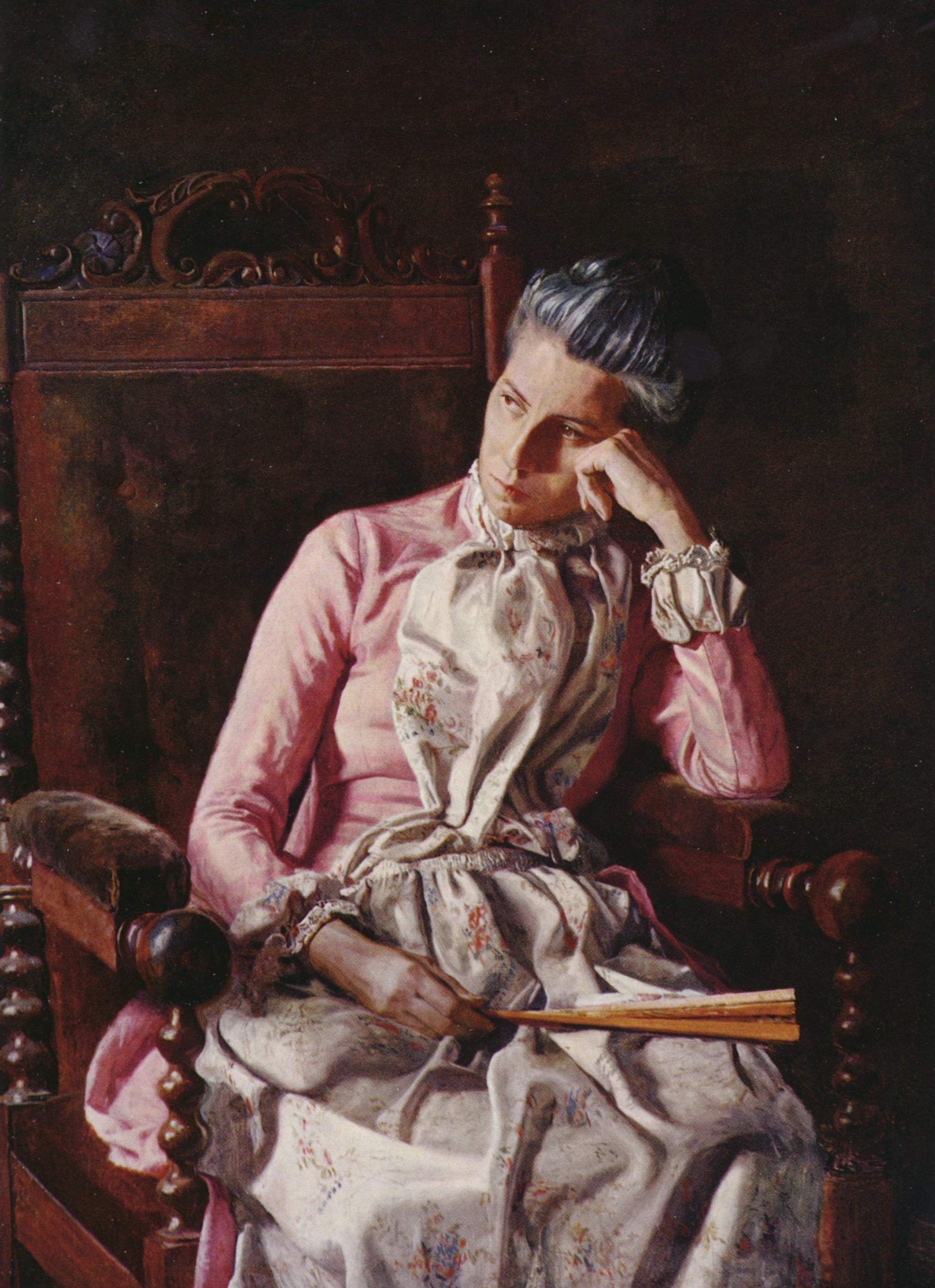

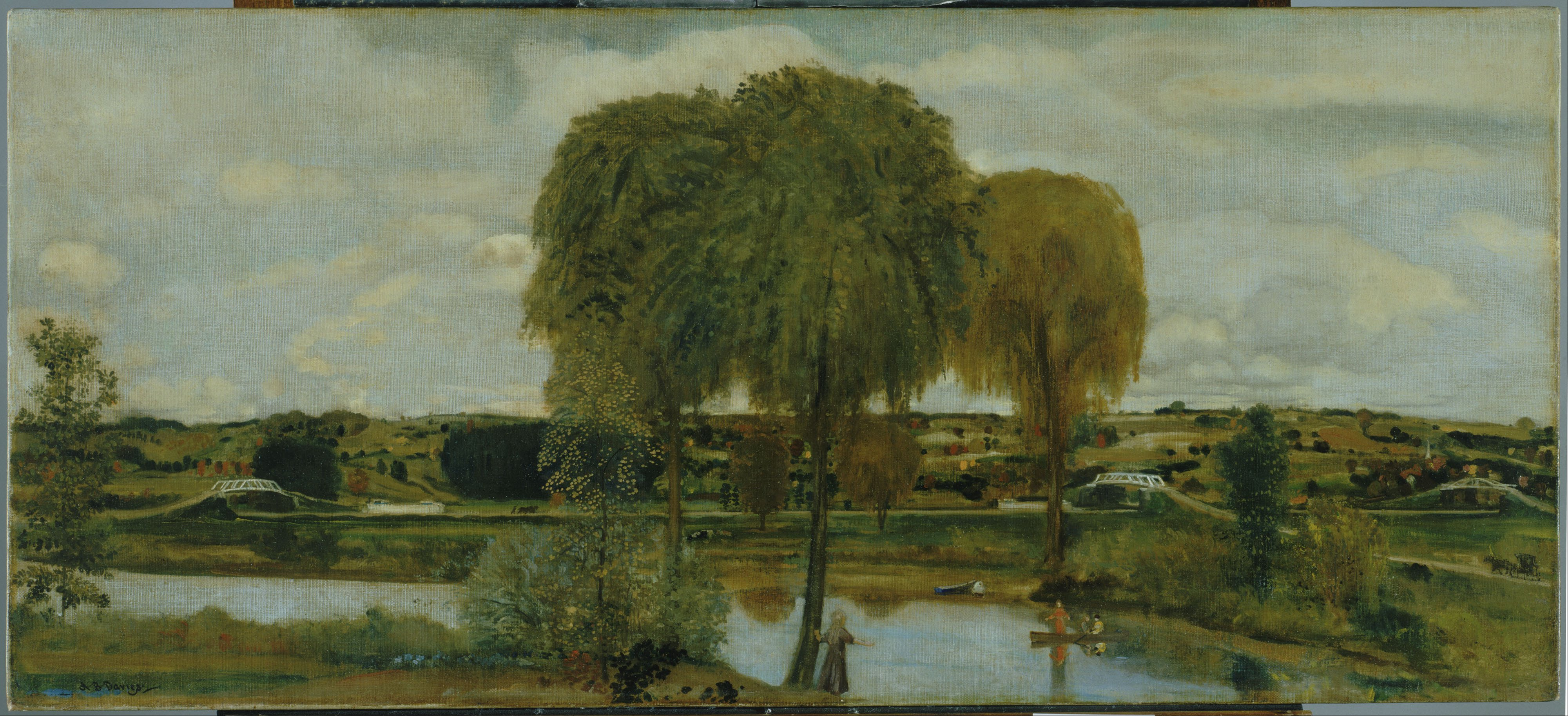
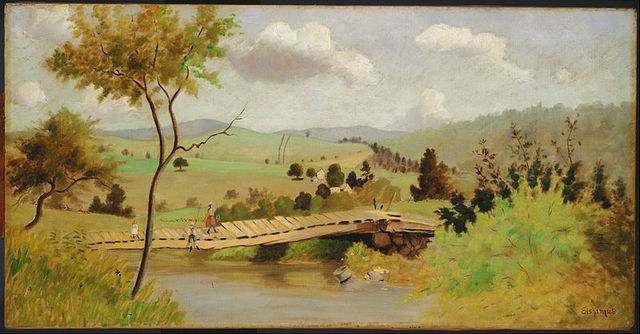





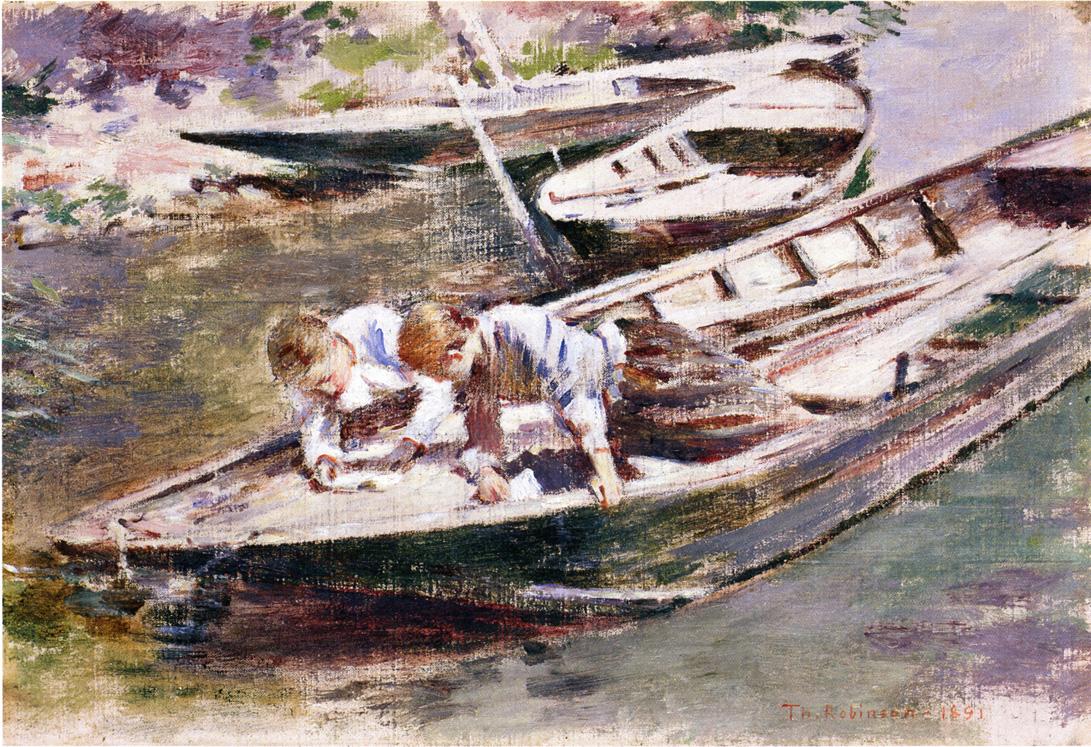
















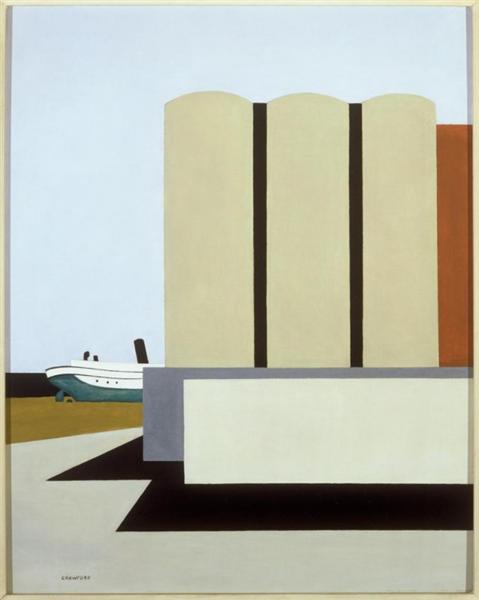









.jpg!Large.jpg)















